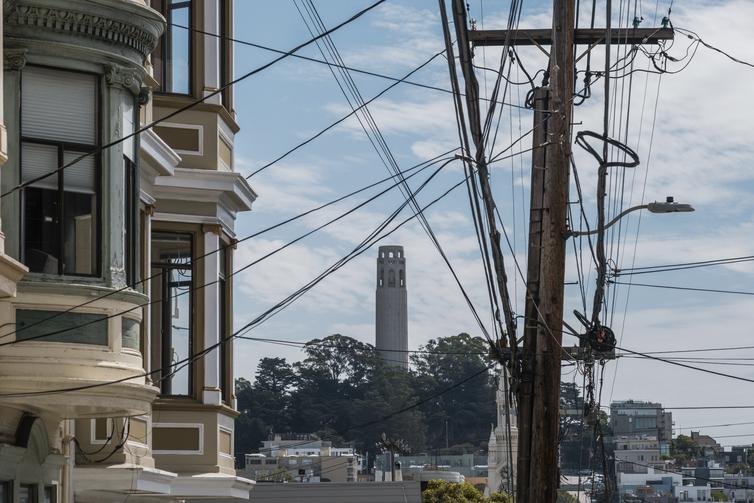California came to the brink of rolling outages Tuesday evening as the grid operator said electricity supplies were running low amid unprecedented demand. The Independent System Operator moved into Stage 3 emergency operations, allowing it to order utilities to initiate shutdowns if necessary.
No outages were immediately ordered as of 7:15 p.m.
“If needed, ISO could order utilities to begin rotating power outages to maintain stability of the electric grid,” California ISO said. “If that occurs, consumers should expect communications — either phone, text or email — from their utilities notifying them of outage areas and likely durations.”
Officials pleaded with the public to reduce afternoon and evening energy consumption, a week into what is set to be the hottest and longest heat wave on record in the state for September.
California’s power grid escaped rolling blackouts through the long Labor Day weekend, but officials escalated their warnings Tuesday, with the state’s electrical demand — primarily driven by air conditioning — setting a new record well before peak usage hours hit.
“We’re heading into the worst part of this heat wave, and the risk for outages is real and it’s immediate,” Gov. Gavin Newsom said in a Tuesday video statement.
Tuesday’s demand peaked at 52,061 megawatts, according to a Tuesday morning statement from the state’s grid operator — more than 3% higher than the 50,270-megawatt record set in 2006.
“Today we have the highest likelihood of initiating outages,” said Anne Gonzales, public information officer with the grid operator. “Consumer conservation tonight will be key.”
For the seventh consecutive day, the grid operator has asked Californians to voluntarily conserve energy from 4 p.m. to 9 p.m. in requests known as Flex Alerts. Before 4 p.m., residents should pre-cool their homes. During peak hours, state officials ask Californians to avoid running major appliances, turn off all unnecessary lights and set the thermostat to 78 degrees or higher, health permitting.
Wednesday’s peak demand is forecast to be 50,002 megawatts, the statement said, and the grid operator was already preparing for a possible declaration of emergency then.
To avoid outages, Californians need to conserve 2 to 3 times more energy than what was saved at the beginning of the heat wave, grid operator California ISO President and CEO Elliot Mainzer said Monday at a news conference.
Numerous power facilities were not operating at full capacity as of Tuesday morning, unplanned in nearly all cases, according to the grid operator’s daily power plant report. Heat can impede plants’ operations. During the heat wave, power plant operators have been asked not to take down their facilities for routine maintenance to maximize the power supply.
Tuesday afternoon, the state had already moved into Stage 2 emergency for the 4 p.m.-to-9 p.m. period. In a Stage 3 emergency, the grid operator asks utility companies to stand by before it orders rolling outages to lower energy demand.
Rolling outages are controlled, intermittent events designed to temporarily lower demand and prevent more devastating outages amid power supply shortfalls, said James Bushnell, a board member of the grid operator’s market surveillance committee and a UC Davis professor specializing in energy markets.
Numerous small-scale outages were also occurring across the Bay Area on Tuesday, likely owing to the challenges that power infrastructure such as transformers face in extreme heat.
Claire Hao is a San Francisco Chronicle staff writer. Email: [email protected] Twitter: clairehao_


